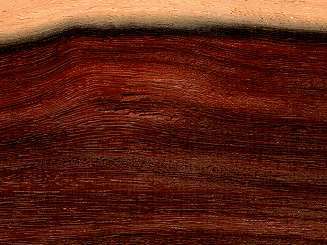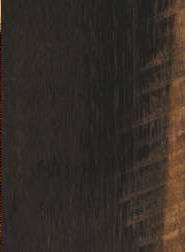  
Wamara (Swartzia cubensis)
Family: Caesalpiniaceae
Common names: Catalox, Katalox, Wamara
Distributed in: Brazil, Columbia, Guyana, Honduras, Mexico, Panama, Peru, Suriname, Venezuela (Central America, Latin America)
Distribution overview: Several species in the genus Swartzia are reported to occur in tropical America, from southern Mexico through Central America, the West Indies and southward to northern South America. It is rather abundant in the Guyanas and the Amazon area.
Common uses: Building materials, Cabinetmaking, Ceiling, Crossties, Decorative veneer, Domestic flooring, Exterior trim & siding, Exterior uses, Factory flooring, Figured veneer, Flooring, Furniture components, Furniture squares or stock, Interior construction, Interior trim, Light construction, Millwork, Moldings, Office furniture, Paneling , Parquet flooring, Railroad ties, Shakes, Sheathing, Shingles, Siding, Stairrails, Stairworks, Sub-flooring, Trimming, Veneer
Environment profile: Status has not been officially assessed
Tree size: Tree height is 50-60 m
Colors: the heart isRed, Reddish brownand the sapwoodWell defined, White/Cream .The grain isStraight to irregular, the textureMedium to very fine and the lusterMedium
Natural durability: Sapwood susceptible to attack by powder post beetles, Susceptible to insect attack
Odor: No specific smell or taste
Kiln Schedules: T2-C1 (8/4) US
Kiln Drying Rate: Naturally dries quickly
Drying Defects: Severe surface checking, Severe twisting/warping
Ease of Drying: Rapidly
Comments: The species has been suggested as a potential substitute for Ebony (Diospyros spp.)
Blunting Effect: Medium effect
Boring: Fairly difficult to very difficult
Cutting Resistance: Moderately difficult due to high density
Gluing: Fairly Easy to Very Easy
Nailing: Fairly Difficult to Very Difficult, Fairly Easy to Very Easy
Planing: Very Good to Excellent
Resistance to Impregnation: Sapwood is permeable
Response to hand tools: Fairly Difficult to Difficult to Work
Turning: Poor to Very Poor Results
Polishing: Excellent;
- Numerical data Metric
- Numerical data English
- Strength properties
- References
 |
 |
 |
 |
| Item |
Green |
Dry |
Metric |
| Specific Gravity |
0,92 |
|
|
| Density |
|
1105 |
kg/m3 |
| Bending Strength |
1488 |
1975 |
kg/cm2 |
| Crushing Strength |
1575 |
1063 |
kg/cm2 |
| Hardness |
|
1640 |
kg |
| Impact Strength |
|
|
cm |
| Shearing Strength |
|
|
kg/cm2 |
| Stiffness |
206 |
250 |
1000 kg/cm2 |
| Tangential Shrinkage |
8 |
|
% |
| Radial Shrinkage |
4 |
|
% |
| Weight |
1089 |
897 |
kg/m3 |
| Maximum Load |
|
|
cm-kg/cm3 |
| Toughness |
|
293 |
cm-kg |
| Static Bending |
|
|
kg/cm2 |
|
 |  |  |  | | Item | Green | Dry | English | | Bending Strength | 21168 | 28097 | psi | | Density | | 69 | lbs/ft3 | | Hardness | | 3616 | lbs | | Maximum Crushing Strength | 22413 | 15131 | psi | | Stiffness | 2940 | 3557 | 1000 psi | | Toughness | | 255 | inch-lbs | | Specific Gravity | 0.92 | | | | Weight | 68 | 56. | lbs/ft3 | | Radial Shrinkage | 4 | | % | | Tangential Shrinkage | 8 | | % | | Volumetric Shrinkage | 11 | | % | |
Very heavy
Hardness (side grain) = very hard
Density = very high
Compression strength (parallel to grain) = high
Bending strength (MOR) = very high
Chudnoff, M.,1984,Tropical Timbers of the World,U.S.A. Department of Agriculture, Forest Service, Forest Products,Laboratory, Madison.Perpetua Hardwoods.Sea Star Trading Co. - Purveyors of Fine Wood.Newport, Oregon.Personal Communication, 1993.Record, S.J. and R.W. Hess. 1943. Timbers of the New World. Published on the Charles Lathrop Pack Foundation, Yale University Press, New Haven CT.
|










